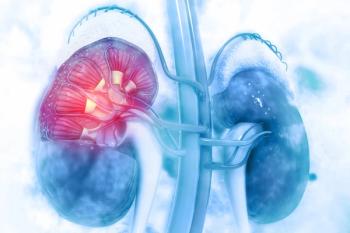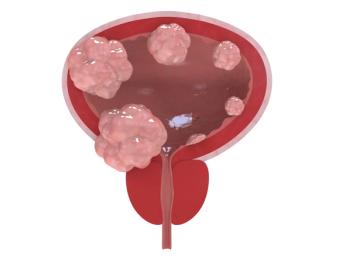
IMDC Model Valid in First-Line Pazopanib for mRCC
A new study has confirmed the safety and efficacy of pazopanib in a real-world setting of patients with metastatic renal cell carcinoma (mRCC) and validates the International Metastatic Renal Cell Carcinoma Database (IMDC) prognostic model in this patient population.
A new study has confirmed the safety and efficacy of the tyrosine kinase inhibitor pazopanib in a real-world setting of patients with metastatic renal cell carcinoma (mRCC) and validates the International Metastatic Renal Cell Carcinoma Database Consortium (IMDC) prognostic model in this patient population.
These results from the SPAZO trial were
Several new therapies for RCC have been approved in recent years. In 2009, the IMDC reviewed information from 645 patients from seven centers who were treated with either sunitinib, sorafenib, or bevacizumab, and used this information to identify six factors-hemoglobin, corrected serum calcium, performance status, time from diagnosis to treatment, neutrophils, and platelets-that predicted shorter overall survival (OS) and developed a prognostic model applicable to patients treated with these drugs.
However, at the time the IMDC prognostic model was developed, pazopanib was not yet approved. Therefore, in this trial, Pérez-Valderrama and colleagues wanted to assess the use of first-line pazopanib and validate the IMDC model in patients with metastatic disease.
To do that, the researchers looked at data taken from 278 consecutive patients with mRCC treated with first-line pazopanib at 34 centers. Using the criteria from the IMDC model, 19.4% of patients in the trial were classified as having favorable risk, 57.2% as intermediate risk, and 23.4% as poor risk.
The overall response rate was 30.3%, and 43.6% of patients had stable disease. Those patients classified as having a favorable risk had a response rate of 44% compared with 17.3% among patients with poor risk.
Median progression-free survival (PFS) was 11 months. Patients with a favorable-risk profile had a median PFS of 32.4 months compared with 11.1 months in the intermediate-risk group and 4 months in the poor-risk group (P < .001). Similarly, the entire group of patients had a median OS of 22 months, but this varied from not yet reached among patients with a favorable-risk profile to 22 months for intermediate-risk patients to 7 months among poor-risk patients (P < .001).
“The application of the IMDC criteria to the SPAZO patients allowed the proper identification of the three planned prognostic subgroups, which in turn were associated with statistically significant differences among them, in terms of response, PFS, and OS,” the researchers wrote.
Newsletter
Stay up to date on recent advances in the multidisciplinary approach to cancer.
















































































